Peter Ireland – 22 July, 2014
On the wall separating the two galleries was a large time-line tracking PhotoForum's history in tandem with related events nationally and internationally. This was a very telling collection of information, a bit like a Plunket notebook noting height, weight, regularity and skin condition. The content of the vitrines fleshed it out with a wide variety of ephemera, including the minutes of the first-ever meeting of the organisation.
Auckland
Group show
History in the Taking: 40 years of PhotoForum
Curated by Geoffrey H Short and Nina Seja
6 June - 28 June 2014
From the mid to the later 1960s public galleries more generally began to include photography exhibitions in their programmes, and in the early to mid ‘70s four of these institutions even began collecting contemporary examples of the medium: the then Auckland City Art Gallery, Gordon H Brown at the then Waikato Art Gallery, Luit Bieringa at the then Manawatu Art Gallery, and Whanganui’s Sarjeant. The latter actually began doing this in 1919, but after the first collection of International Pictorialism was assembled by local photographer Frank Denton this effort languished until new director Bill Milbank energetically revived it from 1977. Since then most galleries have incorporated photography into their collection policies, and, as many of them have merged with their sister museums, photography collections now span the historical spectrum from the mid 19th century to the present.
Even though in the 1970s audience response to such shows was demonstrably enthusiastic, the art establishment largely viewed this populism with typical disdain, giving it further excuse to continue ignoring a growing global phenomenon, taking its art audience with it. Concurrently and inter-relatedly here a new generation of photographers was taking to the medium like a duck to water. Like any possessed by evangelical fervour these practitioners wanted to spread the word and expel the darkness. Their oxygen was a legal drug and they wished more of it for everyone. Harnessing this missionary zeal wasn’t long in coming.
In 1974 two photography lecturers at Auckland’s Elam Art School - John B Turner and the late Tom Hutchins - thought up a loose association of photographers they named PhotoForum Inc, which has remained unencumbered by any bureaucratic structure but which nonetheless has maintained a focus and an energy over four decades, this combination the very reason for PhotoForum’s success in raising photography’s profile to a degree out of all proportion to its membership and resources. Of course, internationally within art museum culture there was a growing interest in the photographic medium, but here the most effective push came from the inside, directed by PhotoForum. It’s a lesson in driven commitment that deserves to be celebrated.
The celebration has taken two principal forms. A history of PhotoForum has been written and other components compiled by Nina Seja, PhotoForum at 40: counterculture, clusters, and debate in New Zealand, and consists of 300 pages handsomely and comprehensively illustrated, the production by Haru Sameshima at Rim Books (1). It was formally launched on the closing day of the other plank of this commemoration, the exhibition History in the Taking at Gus Fisher Gallery, curated by photographer and current president of PhotoForum, Geoffrey H Short in collaboration with Nina Seja.
In the course of researching and writing the book Seja compiled a database of images on which Short largely relied on for curating the exhibition. Given the nature of the enterprise he sensibly decided on a time-line approach, and the chronological sequence filled the two larger exhibition spaces at the Gus Fisher. It was a fresh reminder of just what a magnet PhotoForum was in the 1970s for young photographers eager to wear a progressive badge to distinguish them from the threadbare and often corny epaulettes of the camera clubs. So that while the show was primarily a visual history of PhotoForum it was, incidentally, a chronicle of the development of modernist photography in New Zealand. Of course, there were individual photographers working here from the 1940s committed to the modernist aesthetic, but there was no mass movement until PhotoForum’s advent at the end of 1973.
Many of the images on the walls had been published in PhotoForum magazine between 1974 and 1984, and have become more familiar as, increasingly, the publication has become a source for researchers. Although one of the organisation’s aims was to improve the quality of photographic reproduction, in the early days this remained a hope rather than an actual achievement, so seeing these images in the flesh was a revelation: the rich, velvety blacks, the subtle spectrum of grey tones, the sheer quality of the printing, all rendered bleached and grainy in early reproduction. Since 1984 reproduction quality generally has steadily advanced, and in the past decade or so that early hope has become solid achievement, and in the publication PhotoForum at 40 those early images have found their redemption.
History in the Taking also revealed various other shifts in aim, taste and ambition. In the earlier 1970s the format was predictably 8” x 10”, the aesthetic black and white, the subject matter earnestly documentary. In the later ‘70s and early ‘80s use of Diana and Polaroid cameras lead to both a more personally expressive approach and explorations of colour. What colour there was on the first two walls at the Gus Fisher (two or three examples among dozens) owed more to traditions of screen-printing and hand-colouring than to naturalism: Tom Fraser, Stuart Page and Megan Jenkinson being pioneers there. Women tended to be at the forefront of extending boundaries (a development hand-in-hand with the Feminist movement), especially with the Polaroid: Janet Bayly, Jane Zusters, Gillian Chaplin and Dinah Bradley to name the most obvious. So, an exhibition such as this isn’t merely an art show displaying a lot of images: embedded within it are political, social and aesthetic histories too.
The 1980s saw the art world wake up to photography, a development hand-in-hand with the advent of Postmodernism, and this recognition gave photographers greater confidence to explore more diverse subject matter, the potential of colour, different formats and greater scale - explorations continuing to this day. The second gallery - the old 1ZA foyer - displayed the more recent work, and the standard formats evident in the early work was nowhere in evidence. The only evidence offered was of multiple approaches and a sense of adventure. No one can predict “where photography might go”, but this exhibition suggested it’s fit enough to go anywhere, an outcome surely fulfilling the aspirations of those who founded PhotoForum.
Historically, History in the Taking was more skewed towards the earlier, pioneering period, the decade of the magazine, and at a time of celebrating beginnings this was an understandable focus, and one that was largely redressed by the accompanying publication.
Perhaps the most fascinating part of the exhibition was what is usually thought of as supporting material, but here as integral to the show as the images: the wall-based extended texts and - especially - the large amount of material in the vitrines, drawn mostly from PhotoForum’s archives and John B Turner’s personal collection. On the wall separating the two galleries was a large time-line tracking PhotoForum’s history in tandem with related events nationally and internationally (it’s on PhotoForum’s website). This was a very telling collection of information, a bit like a Plunket notebook noting height, weight, regularity and skin condition. The content of the vitrines fleshed it out with a wide variety of ephemera, including the minutes of the first-ever meeting of the organisation. Such material made the 40th anniversary celebration as vivid as photography itself makes vivid the world.
On the show’s last day when the book was launched there was talk the exhibition might travel to at least the main centres. Given its range, historical worth, marvellous content, engaging quality and ability to tell one of photography’s more interesting and illuminating stories History in the Taking deserves a much wider audience nationally.
Peter Ireland
(1) Rim Books, Box 68896 Newton, Auckland 1145, $65.00
Recent Comments
Fiona Clark
I have not seen the 40th ‘Show” / the exhibition, nor the book – I have only e-mails and looked ...
peter ireland
Ian Macdonald has outlined a significant narrative about the beginnings of contemporary colour photography here in the 1970s he clearly ...
Ian Macdonald
I too had noticed the gradual introduction of colour to the chronology of the exhibition really well curated by Geoff ...
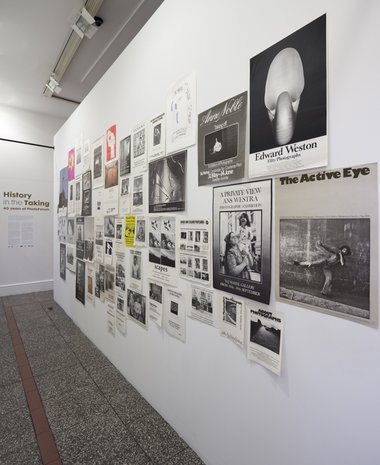
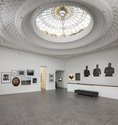
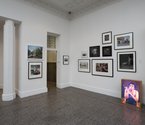
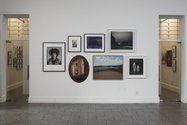
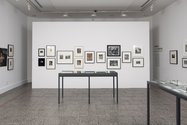
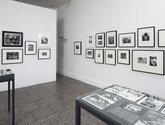
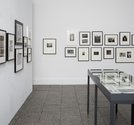

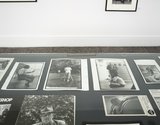
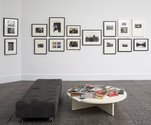
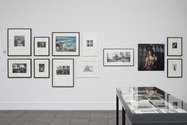

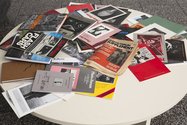
 Two Rooms presents a program of residencies and projects
Two Rooms presents a program of residencies and projects Advertising in this column
Advertising in this column



This Discussion has 3 comments.
Comment
Ian Macdonald, 3:47 p.m. 26 July, 2014 #
I too had noticed the gradual introduction of colour to the chronology of the exhibition really well curated by Geoff Short.
It was illustrative that the first colour print exhibited in that continuum was my print out of the Muriwai whale series. This series was photographed in 1973 and was well exhibited and published through the 70s including an essay in Art New Zealand issue 7.
This photography marks a pioneering effort by Fiona Clark, Kevin Donovan and myself as students at Elam. We built a colour darkroom there ourselves where we initiated colour film and paper processing. Out of this came Fiona’s John Court series through to her work in the Go Girl show. Kevin Donovan produced his Street Car series in colour at the time. A number of contemporary photographers used the services of the Elam lab and were mature in the medium by the time I started Real Pictures where we were by the late 1970’s printing exhibitions for such artists as Bruce Foster and Robin Morrison.
The omission of this narrative is common in historical reviews of New Zealand photography and this review just perpetuates it. I think those responsible for writing down this history need to be more careful.
If this reviewer sees this exhibition as an excuse for the romantic nostalgia prevalent at the moment towards the “beautiful” blacks and greys of monochromatic images then he fails to understand this exhibition beyond its craft.
Ian Macdonald
peter ireland, 7:15 p.m. 29 July, 2014 #
Ian Macdonald has outlined a significant narrative about the beginnings of contemporary colour photography here in the 1970s he clearly feels has gone unacknowledged in accounts of the medium’s history. His point is a valid one.
However, a reviewer of an exhibition can only review an actual exhibition: my piece was about a show in the Gus Fisher Gallery, not one in Ian Macdonald’s imagination. While I did suggest 'History in the Taking' could be read as a history of photography’s development here since the early 1970s there was no suggestion any such reading was exclusive or even comprehensive. Besides, Macdonald describes the exhibition as “really well curated” by Geoffrey Short, but the show omits his narrative too. So, strangely, I am somehow culpable when Short isnt.
Macdonald states “those responsible for writing down this history need to be more careful.” I have to confess that in 35 years of consistently writing about photography I’ve never felt “responsible” for assembling some kind of history. Faithful readers will be aware I don’t even believe in such a thing as a photographic history, so contaminated the idea is by the formulations of conventional art history. In my view it’s too soon to write anything resembling “a history”. Being “responsible for writing down a history” is a burden I’ve never wanted to shoulder: all I’ve tried to do is tentatively indicate the track this particular beast might be taking.
I’m more than happy to leave the writing of histories to authors such as David Eggleton. His 'Into the Light' also fails to acknowledge Macdonald’s narrative, and yet in the 8 years since its publication I’m not aware that Macdonald has ever publicly pointed out the lack.
Macdonald also refers to “the romantic nostalgia prevalent at the moment towards the ‘beautiful’ blacks and greys of monochromatic images”. I keep a pretty close eye on what’s being written and talked about, yet for the life of me I’ve not detected any hint of this prevalence Macdonald speaks of. Besides, phrases such as “romantic nostalgia” have a pejorative tone unhelpful in any productive debate. If Macdonald has an issue with something it would be better to have it stated clearly, not merely hinted at rather grumpily. The EyeContact site exists for debate and I’m confident its editor would welcome a more extensive supply of harder evidence about this apparent phenomenon. As I say continually, there’s no copyright on initiative.
As for Macdonald’s accusation that I fail “to understand this exhibition beyond its craft” I’m happier than a sandboy to leave readers to reach their own conclusions. I might point out, though, that the first major, nationally-touring exhibition to showcase contemporary colour photography in New Zealand - thirty two years ago - was curated by me. Any critic must be prepared for brickbats, but it would be nice to get some credit occasionally too.
Fiona Clark, 12:41 p.m. 30 July, 2014 #
I have not seen the 40th ‘Show” / the exhibition, nor the book – I have only e-mails and looked at this online. So a conversation on Photoforum’s relationship to early colour photography is timely, being one who is named in this online conversation and being part of PF over the last 40 years. I am assuming the relationship between PF and to the early contemporary colour photography in N.Z. has not been addressed – as I have not had any conversations on the 40th ‘show” and publication in relation to colour photography.
Of course this fits into the 40 years of PF’s history. Colour images just do not appear in early publications until issue 35, December 1976 / January 1977 which has colour adverts which were sponsored. Colour work was being done prior to and when the establishment of PF occurred – of course it was! Processing and printing was done in partnership with privately run colour labs in Auckland. Some of us learnt the craft of colour by working in lieu of using these labs and darkrooms.
The Elam colour darkrooms were built in early 1975 from the demolition materials from the university engineering school, which we stole at night. Just like building the darkrooms from demolition materials and self funding the small lab ourselves as students - colour photography and prints were part of Elam and PF’s history from its inception. The publication of colour images did not occur – not for the lack of quality, nor content. I was told ‘it was too expensive to print my work in publications’. Not giving up - I then made an offer to mass hand print a set of small images as inserts for a PF issue in late 1975 – at the same time I was mass hand printing small images for Carmen Rupe to use as her Christmas cards. My offer to PF was declined.
These were blatant excuses which were all about personal preference.
Yes, I will know admit to the graffiti that often appeared in the Elam toilets walls - Black and White rule (many thought this was in relation to the Bastion Point occupation!) and Pretty Colour Pictures - a name I coined for my early colour work.
From early 1975 the Elam studio walls were decorated with colour images, the desks and floor in the studio was littered with colour test strips and the ever invasive smell of C41 bleach/fix permeated the corridors of the photographic department. There was no romance for us working and printing in colour and no expenses spared.
There is a missing narrative from that time – there was an unwillingness to publish PF with colour images and therefore acknowledge its existence. When the debate 'Was Photography Art?' was being discussed, it appeared to be exclusively about those working in black and white. We regarded ourselves as colour photographers and we numbered less than a handful.
I would welcome PF producing a publication on colour photography in N.Z.
A correction to Ian Mac’s comments – it was George Courts Department Store in K Road – not John Courts.
Fiona Clark.
Participate
Register to Participate.
Sign in
Sign in to an existing account.